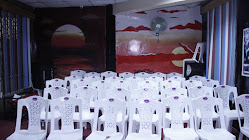No, al-Shabab is not deadlier than Boko Haram. Here are better numbers
Friday July 21, 2017
Somali soldiers stand guard at the scene of a car bomb explosion near Mogadishu, Somalia, on July 12, 2017. Media outlets report that at least two people were killed when the car bomb went off at a checkpoint outside the Somali capital. (Said Yusuf Warsame/European Pressphoto Agency)
In May, a U.S. Navy SEAL
was killed and two other U.S. service members were wounded on Somali soil. It
was the first U.S. combat death in the East African country since 1993 — and it
came amid ramped-up efforts to fight the deadly extremist group al-Shabab.
For years, Boko Haram has carried the dubious distinction of being
Africa’s deadliest terrorist group. But a multinational task force has weakened
the group. It has been crippled so badly that al-Shabab has emerged as Africa’s
deadliest extremist group.
That is according to a report by the Africa Center for Strategic Studies published in April. Based on that report, Quartz and Newsweek ran stories last month exploring exactly how al-Shabab surpassed Boko Haram in lethality.
But is al-Shabab really more lethal than Boko Haram? We disagree.
A closer look at the data suggests, however, that it might be too early to pass the “deadliest group” mantle to al-Shabab.
That is according to a report by the Africa Center for Strategic Studies published in April. Based on that report, Quartz and Newsweek ran stories last month exploring exactly how al-Shabab surpassed Boko Haram in lethality.
But is al-Shabab really more lethal than Boko Haram? We disagree.
A closer look at the data suggests, however, that it might be too early to pass the “deadliest group” mantle to al-Shabab.
Here’s what ACSS concluded:
Al Shabaab grew more lethal in 2016, with fatalities increasing by a third — from 3,046 in 2015 to 4,281 in 2016. Al Shabaab has now surpassed Boko Haram as Africa’s most deadly militant Islamic group.
ACSS based its conclusions on data from ACLED, the Armed Conflict Location and Event Data Project. But on the basis of the same data set, our analysis found that Boko Haram remains Africa’s deadliest terrorist group — and that al-Shabab killed a fraction of the victims reported by ACSS.
Al Shabaab grew more lethal in 2016, with fatalities increasing by a third — from 3,046 in 2015 to 4,281 in 2016. Al Shabaab has now surpassed Boko Haram as Africa’s most deadly militant Islamic group.
ACSS based its conclusions on data from ACLED, the Armed Conflict Location and Event Data Project. But on the basis of the same data set, our analysis found that Boko Haram remains Africa’s deadliest terrorist group — and that al-Shabab killed a fraction of the victims reported by ACSS.
How could our
conclusions be so different?
To understand how such a discrepancy might arise, it is important to consider what ACLED does and does not do. ACLED tracks incidents of violence across Africa and Asia. It draws its data from reports from news organizations, governments, nongovernmental organizations and published research.
ACLED codes entries by type (for example, battles, riots, protests and violence against civilians). It also identifies primary and secondary actors. It does not, however, label actors as terrorists or events as terrorism incidents. Here is how ACLED describes its approach in an overview of its methodology:
ACLED does not categorize clusters or campaigns of events, largely because political violence, protest and conflict are aggregations of multiple actors, attacks, goals, etc. To classify events as discrete acts in an ‘insurgency’ or ‘terrorism’, ‘civil war’ or ‘livelihood conflict’ is often a reductive choice, leaving out the complex ways in which conflict creates multiple scales of violence and intended outcomes within a territory.
Since ACLED declines to decide which incidents count as terrorism, those who use its data must interpret that data to draw conclusions about terrorism trends. ACSS decided to tally fatalities in which al-Shabab is listed either as the first or second actor. We decided to include only cases in which it is the first actor.
To understand how such a discrepancy might arise, it is important to consider what ACLED does and does not do. ACLED tracks incidents of violence across Africa and Asia. It draws its data from reports from news organizations, governments, nongovernmental organizations and published research.
ACLED codes entries by type (for example, battles, riots, protests and violence against civilians). It also identifies primary and secondary actors. It does not, however, label actors as terrorists or events as terrorism incidents. Here is how ACLED describes its approach in an overview of its methodology:
ACLED does not categorize clusters or campaigns of events, largely because political violence, protest and conflict are aggregations of multiple actors, attacks, goals, etc. To classify events as discrete acts in an ‘insurgency’ or ‘terrorism’, ‘civil war’ or ‘livelihood conflict’ is often a reductive choice, leaving out the complex ways in which conflict creates multiple scales of violence and intended outcomes within a territory.
Since ACLED declines to decide which incidents count as terrorism, those who use its data must interpret that data to draw conclusions about terrorism trends. ACSS decided to tally fatalities in which al-Shabab is listed either as the first or second actor. We decided to include only cases in which it is the first actor.
Here is why we counted
the way we did
Which approach is best? Obviously, that is a judgment call. We believe that counting first and second actors significantly overestimates the deaths caused by al-Shabab and other terrorist groups.
Most incidents in which al-Shabab is the second actor — 73 percent — are battles with military forces, usually the African Union Mission in Somalia. That raises two questions:
Is a battle between a terrorist group and a military unit an incident of terrorism?
Which approach is best? Obviously, that is a judgment call. We believe that counting first and second actors significantly overestimates the deaths caused by al-Shabab and other terrorist groups.
Most incidents in which al-Shabab is the second actor — 73 percent — are battles with military forces, usually the African Union Mission in Somalia. That raises two questions:
Is a battle between a terrorist group and a military unit an incident of terrorism?
How many of the reported
fatalities tied to the incident were of al-Shabab forces?
By counting only incidents in which al-Shabab is the first actor,
our analysis greatly de-emphasizes military altercations.
In our tally, al-Shabab killed 432 people last year. In contrast, Boko Haram killed nearly twice as many — 790 — in incidents of violence against civilians. Considering all types of attacks, including battles, Boko Haram killed nearly three times as many people.
In our tally, al-Shabab killed 432 people last year. In contrast, Boko Haram killed nearly twice as many — 790 — in incidents of violence against civilians. Considering all types of attacks, including battles, Boko Haram killed nearly three times as many people.
In its guide for the
media, ACLED cautions against using its data to determine how many people a
particular group has killed, because it does not specify which group suffered
casualties in an incident with two actors — except in cases of violence against
civilians.
Our analysis emphasizes this kind of attack. Violence against
civilians counts for 81 percent of the deaths in our tally. In ACSS’s analysis,
violence against civilians makes up just 8 percent.
Subscribe to:
Post Comments
(
Atom
)


















No comments :
Post a Comment